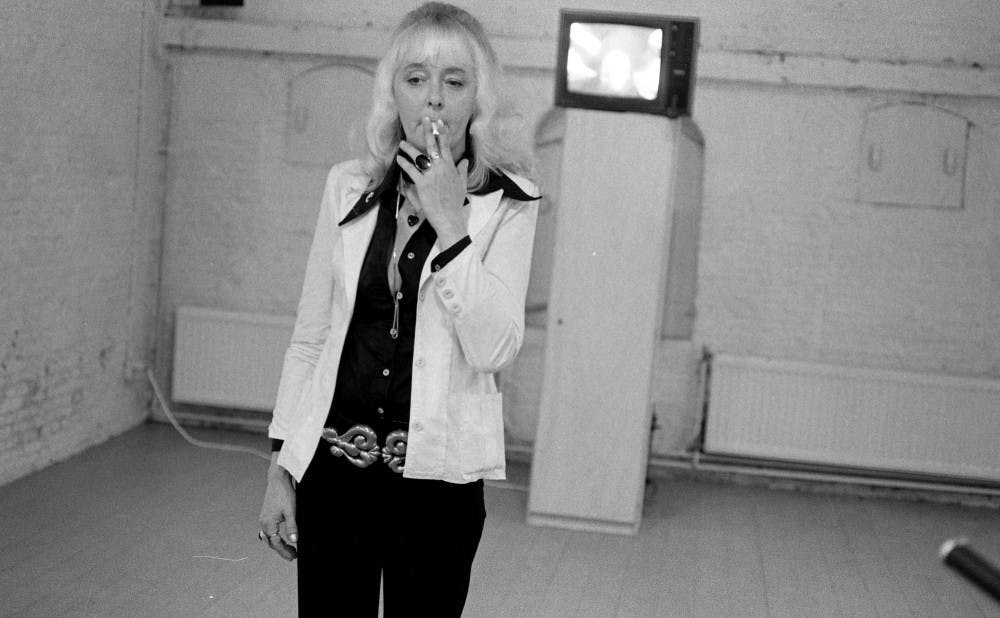It's the fourth time that you hear yourself saying you want to "escape from the Penn bubble" and "explore the city," but then you get back to work or job search. From now till May 22, a new exhibition at The Barnes Foundation titled Person of the Crowd: The Contemporary Art of Flânerie might inspire you to follow through. The exhibit will lead you to appreciate the magic of wandering, take a fresh perspective at the urban landscape and find a critical, even poetic, approach to daily routines.
Flânerie is the activity of a flâneur: someone who roams with no fixed itinerary, observing the social fabric of the city streets with its inhabitants and their public activities. The concept was first introduced in an 1840 Edgar Allan Poe story. Two decades later, Charles Baudelaire recognized flânerie as the engine of French Impressionism in his essay "The Painter of Modern Life." But in the 20th century, when American Abstract Expressionism focused on the inner self and was at the center of the art world, contemporary socio–political life seemed to have little place in art.
In the 1950s, artists like Robert Rauschenberg and Carolee Schneemann revived flânerie. The artists integrated their personal lives and their art, intentionally blurring the distinction between the two. They produced works out of their own bodies, encounters or concepts, at the same time offering poignantly artistic and critically reflective commentary on the broader social and political environment.

In an attempt to continue this legacy, The Barnes' exhibition examines contemporary flânerie by sampling socially–conscious art practice created between 1957 and 2016 by over 50 international artists with diverse racial and gender identities. Breaking the constraints of the studio space, these artists have become field detectives who study social phenomena, cartographers who map out urban patterns, scavengers who collect civic traces or provocateurs who challenge the status quo.
Provocateur
One commonly used technique by some of these socially–engaged artists is to politicize the personal body in order to provoke the collective response. Zhang Huan performed My New York in the wake of 9/11. Dressed in a suit made from raw meat, he walked down the street of the Upper East Side of New York City, set doves loose from a cage one by one and handed them to random pedestrians. In a costume of physical strength and a Buddhist gesture of compassion, Zhang embodies fierceness and healing at the same time.
Adrian Piper used her body as a field of social experiment in the Catalysis project between 1970 and 1976. Imposing unexpected acts onto her body, by wearing a sweatshirt that said "Wet Paint" or by stuffing cloth in her mouth, Piper wandered around different locations in these provocative guises, observing and analyzing people's reactions, thereby reflecting on her sense of self and her relationship with society.

Tania Bruguera embodied herself as a Congolese power figure and walked through city streets in a garment made of earth, cloth, wood and nails. Originally performed in Havana in 1988 on Fidel Castro's birthday, she conceives this work as "an allegorical way to approach the political reality and social promises that have been made and never kept."
Detective
Artists Mierle Laderman Ukeles, Martha Rosler and Tehching Hsieh draw attention to marginalized population living in the city with various degrees of self–involvement. In a 10–month performance project titled Touch Sanitation, Ukeles shook hands with each of the 8,500 New York City street sweepers while traveling and eating with them. She directly engaged with them, carefully mapping the 59 sanitation districts in order to reach all of them and documenting the journey through audio and video. She brought humanity and equality back to the street sweepers.
Rosler, on the other hand, avoids representation of human figures in a series of pairings of photographs of doorways and synonyms of inebriation. While she pays attention to the alcoholic homeless population, she nevertheless recognizes her inability to offer an adequate account of this complex socioeconomic issue in the title The Bowery in Two Inadequate Descriptive Systems.
In One Year Performance, Hsieh attempted to immerse himself in extreme situations by living on the streets of Manhattan without entering any man–made structure between 1981 and 1982. By subjecting himself voluntarily to homelessness and insecurity, Hsieh magnified the challenges faced by homeless people through the lens of art.
Although arranged in a relatively small space, the works in Person of the Crowd address some of the largest social issues that are still relevant today. These artists are not idle flâneurs who wander for pleasure, but they are critics, fighters and activists who reveal social realities as they walk on the streets.
While much of the exhibition is presented inside The Barnes, a series of outdoor projects, including posters, digital works, billboards, public sculptures and performances will take place on the streets of Philadelphia throughout the exhibition run. For updates on locations and the schedule of events, refer to personofthecrowd.org.
Related Programs
Flânerie on screen: Midnight in Paris (2011), March 20, 7:30–9:05 p.m., register online
Symposium: Flânerie and the Politics of Public Space, April 15, 9 a.m.–4 p.m., register online (students receive $15 tickets to the symposium)
The Barnes Foundation, open Wednesday–Monday 10 a.m.–5 p.m., located at 20th Street and the Benjamin Franklin Parkway
College and graduate students receive free admission to the Barnes Collection and Person of the Crowd on weekdays. For hours and other info, check the website. The Barnes also has Free First Sundays, and offers $10 walk-up tickets for college students to First Fridays.
Image: Marina Abramović, Role Exchange, Performance, 4 hours, De Appel Gallery, Red Light District, Amsterdam, 1975. © Marina Abramović. Courtesy of The Barnes Foundation.







